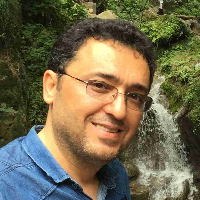Flood risk analysis using random forest machine learning method (Case study: Mashhad city)
Flood is one of the most common natural disasters that causes significant financial and human losses. Although rainfall is low in many parts of Iran, in some areas, the highest amount of annual rainfall occurs in just one day or a short period, leading to floods. Due to geological structure and ecosystem destruction, the surface water during floods can be highly polluted and often carries a lot of sediment, which increases flood damage. To reduce potential flood damage, planners and decision-makers must be aware of the time and location of floods. This requires the use of new methods for predicting floods and preventing their damage. In this study, the Random Forest (RF) machine learning method was used to predict the location of floods in Mashhad city, and its performance was evaluated. The impact of each factor including average basin elevation and slope, slope direction, topographic moisture index, drought index, distance from waterways, geology, land use, waterway density, waterways, and maximum average annual rainfall was also examined in this prediction. The evaluation results of the RF model output showed an AUC value of 95%. Overall, the results showed that the RF model has high accuracy in identifying flood-prone areas in the Mashhad city basin.
-
Utilization of Fourier Transform and Landscape Metrics for Landscape Health Assessment
Niloufar Islamzadeh *, Alireza Mikaieli Tabrizi, Abdolrassoul Salmanmahiny, Rasul Ghorbani
Environmental Researches, -
Investigation of the distribution of plant species for systematic mapping of urban habitats with an ecological approach (Case study: Districts 9 and 11 of Mashhad City)
Raziyeh Donyavi, Alireza Mikaeili Tabrizi *, Abdolrasoul Salmanmahini, Azadeh Karimi
Journal of Environmental Studies, -
Prioritizing Indicators of Sustainable Urban Development Using the Delphi Method (Case Study: Mashhad City)
, Abdolrassoul Salman Mahiny *, Alireza Mikaeili Tabrizi, Thomas Houet
Environment and Development Journal, -
Determining the Land surface temperature using two Split window and Mono window algorithms-Case study: Mashhad
, Abdolrassoul Salmanmahiny *, Alireza Mikaeili Tabrizi, Thomas Houet
Journal of of Geographical Data (SEPEHR),




